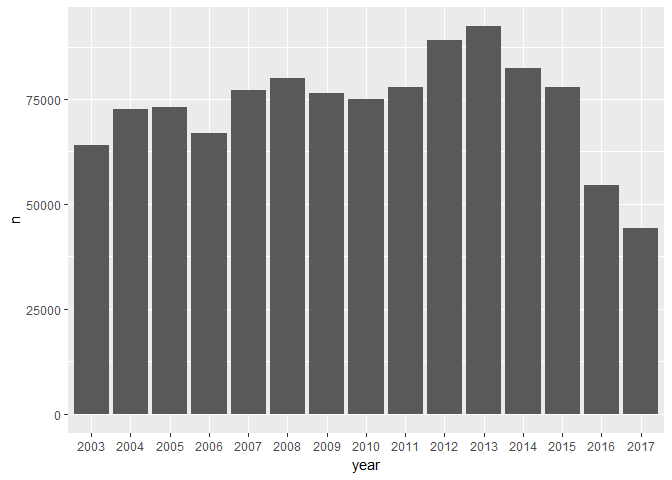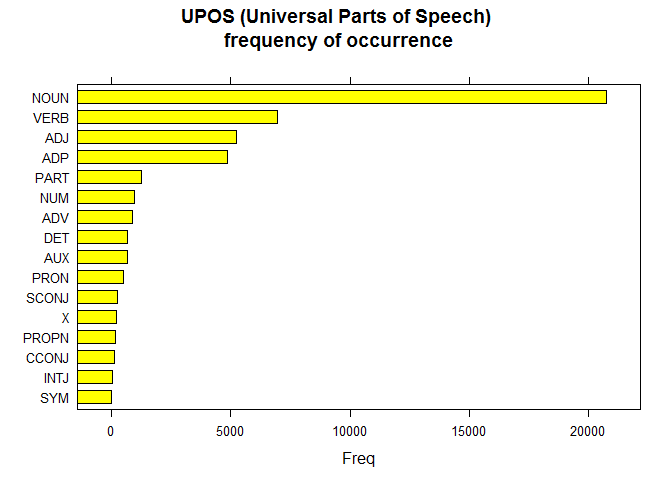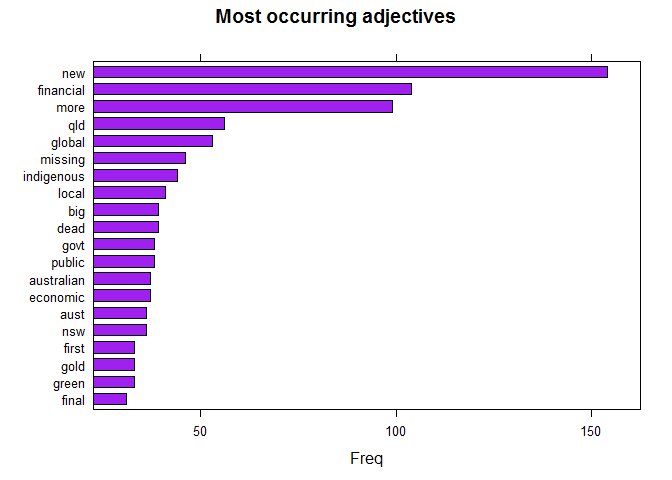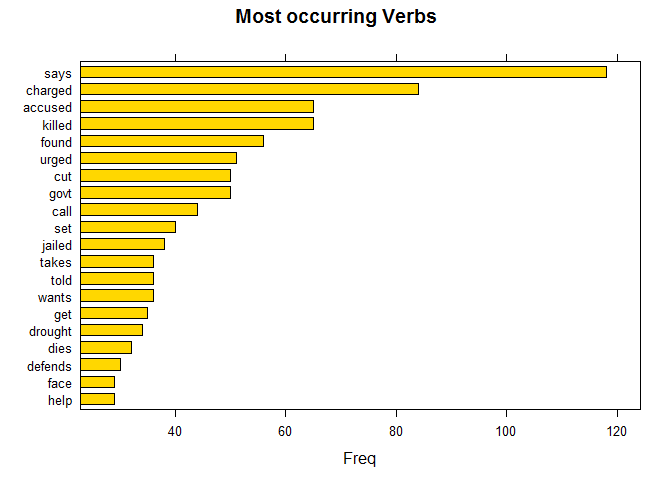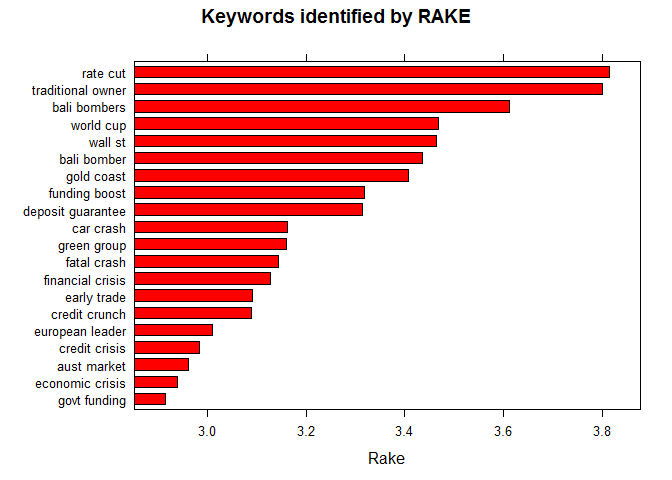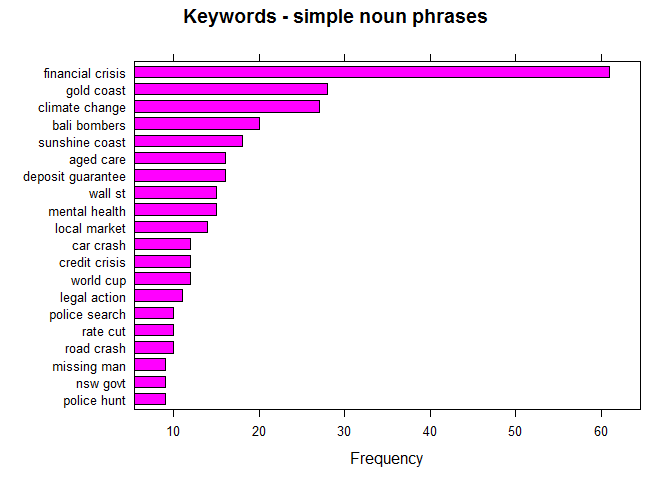Natural Language Processing (NLP) has been seen as one of the blackboxes of Data Analytics. The aim of this post is to introduce this simple-to-use but effective R package udpipe for NLP and Text Analytics. UDPipe — R package provides language-agnostic tokenization, tagging, lemmatization and dependency parsing of raw text, which is an essential part in natural language processing.
Installation
udpipe is available on CRAN hence can be installed like this:
install.packages('udpipe')
Input Dataset
This includes the entire corpus of articles published by the ABC website in the given time range. With a volume of 200 articles per day and a good focus on international news, we can be fairly certain that every event of significance has been captured here. This dataset can be downloaded from Kaggle Datasets.
Summary
Loading required packages for basic Summary :
library(dplyr) library(ggplot2)
Understanding the basic distribution of News articles published:
news <- read.csv('abcnews-date-text.csv', header = T, stringsAsFactors = F)
news %>% group_by(publish_date) %>% count() %>% arrange(desc(n))
## # A tibble: 5,422 x 2
## # Groups: publish_date [5,422]
## publish_date n
##
## 1 20120824 384
## 2 20130412 384
## 3 20110222 380
## 4 20130514 380
## 5 20120814 379
## 6 20121017 379
## 7 20130416 379
## 8 20120801 377
## 9 20121023 377
## 10 20130328 377
## # ... with 5,412 more rows
Before we move on to perform text analysis let’s split year, month and date and see the distribution of data based on year.
library(stringr)
news_more % mutate(year = str_sub(publish_date,1,4),
month = str_sub(publish_date,5,6),
date = str_sub(publish_date,7,8))
news_more %>% group_by(year) %>% count() %>% ggplot() + geom_bar(aes(year,n), stat ='identity')
Gives this plot:
Pre-trained Model
Udpipe Package provides pretrained language models for respective languages (not programming — but spoken) and we can download the required model using udpipe_download_model()
Loading R package and Getting Language Model ready
library(udpipe) #during first time model download execute the below line too #model <- udpipe_download_model(language = "english") udmodel_english <- udpipe_load_model(file = 'english-ud-2.0-170801.udpipe')
Considering the volume of data, let us subset data only for 2008 and begin our text analysis.
news_more_2008 <- news_more %>% filter(year == 2008 & month == 10)
Annotate Input Text Data for 2008
This is the very first function that we’d use in udpipe to get started with our Text Analysis journey. udpipe_annotate() takes the language model and annoates the given text data
s <- udpipe_annotate(udmodel_english, news_more_2008$headline_text) x <- data.frame(s)
Universal POS
Plotting Part-of-speech tags from the given text
library(lattice)
stats <- txt_freq(x$upos)
stats$key <- factor(stats$key, levels = rev(stats$key))
barchart(key ~ freq, data = stats, col = "yellow",
main = "UPOS (Universal Parts of Speech)\n frequency of occurrence",
xlab = "Freq")
Gives this plot:
Most Occurring Nouns
Since we’ve got the text annotated with Part of Speech, let’s understand the most common words of nouns.
## NOUNS
stats <- subset(x, upos %in% c("NOUN"))
stats <- txt_freq(stats$token)
stats$key <- factor(stats$key, levels = rev(stats$key))
barchart(key ~ freq, data = head(stats, 20), col = "cadetblue",
main = "Most occurring nouns", xlab = "Freq")
Gives this plot:
Ironically, none of the top Nouns that appeared on the newspaper headline just in one month — 10th of 2008, don’t bring optimism.
Most Occurring Adjectives
It’d be very hard to find a news agency that doesn’t like exaggerating and in English, you exaggerate your object with Adjective. So, let’s explore the most occurring Adjectives
## ADJECTIVES
stats <- subset(x, upos %in% c("ADJ"))
stats <- txt_freq(stats$token)
stats$key <- factor(stats$key, levels = rev(stats$key))
barchart(key ~ freq, data = head(stats, 20), col = "purple",
main = "Most occurring adjectives", xlab = "Freq")
Gives this plot:
Most Occurring Verbs
The reporting nature of Media outlets could be very well understood with the way kind of verbs they are using. Do the bring any sign of optimision or they just infuse pessimism? The usage of verbs can answer them.
## VERBS
stats <- subset(x, upos %in% c("VERB"))
stats <- txt_freq(stats$token)
stats$key <- factor(stats$key, levels = rev(stats$key))
barchart(key ~ freq, data = head(stats, 20), col = "gold",
main = "Most occurring Verbs", xlab = "Freq")
Gives this plot:
With words like charged, killed, drought and much more, it doesn’t look like the Australian Media outlet wasn’t much interested in building an optimistic mindset among its citizens rather like any typical news organization would look for hot, burning, sensational news, it has done the same.
Automated Keywords Extraction with RAKE
Time for some advanced Machine Learning. RAKE is one of the most popular (unsupervised) algorithms for extracting keywords in Information retrieval. RAKE short for Rapid Automatic Keyword Extraction algorithm, is a domain independent keyword extraction algorithm which tries to determine key phrases in a body of text by analyzing the frequency of word appearance and its co-occurrence with other words in the text.
## Using RAKE
stats <- keywords_rake(x = x, term = "lemma", group = "doc_id",
relevant = x$upos %in% c("NOUN", "ADJ"))
stats$key <- factor(stats$keyword, levels = rev(stats$keyword))
barchart(key ~ rake, data = head(subset(stats, freq > 3), 20), col = "red",
main = "Keywords identified by RAKE",
xlab = "Rake")
Gives this plot:
TOP NOUN — VERB Pairs as Keyword pairs
In English (or probably in many languages), Simple a noun and a verb can form a phrase. Like, Dog barked — with the noun Dog and Barked, we can understand the context of the sentence. Reverse-engineering the same with this headlines data, let us bring out top phrases – that are just keywords/topics
## Using a sequence of POS tags (noun phrases / verb phrases)
x$phrase_tag <- as_phrasemachine(x$upos, type = "upos")
stats <- keywords_phrases(x = x$phrase_tag, term = tolower(x$token),
pattern = "(A|N)*N(P+D*(A|N)*N)*",
is_regex = TRUE, detailed = FALSE)
stats <- subset(stats, ngram > 1 & freq > 3)
stats$key <- factor(stats$keyword, levels = rev(stats$keyword))
barchart(key ~ freq, data = head(stats, 20), col = "magenta",
main = "Keywords - simple noun phrases", xlab = "Frequency")
Gives this plot:
That concludes the very well-known fact that the 2008 financial crisis was not just a US market meltdown but it was a hot topic all over the world with Australian market not being an exception, this analysis lists Financial Crisis at the top along with Wall st after a few topics.
It’s also worth noting that this magazine (even though we’ve seen above that is more interested in highlighting negative news) has helped in making awareness of Climate Change which even the current US President dislikes.
Hope this post helped you get started with NLP and Text Analytics in R and if you’d like to know more on Tidy Text Analysis check out this tutorial by Julia Silge. The code used here is available on my github.
